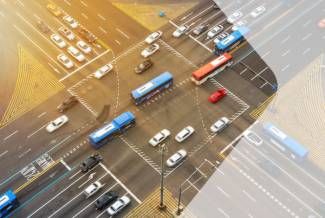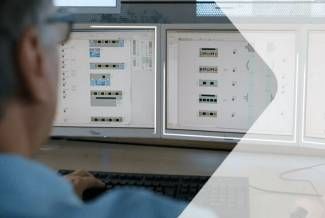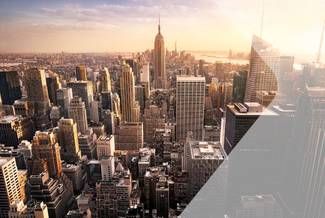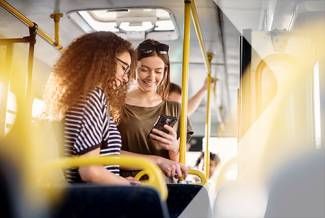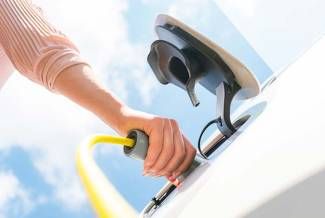Green Wave in Traffic:
Challenges
The "green wave" in traffic is a concept designed to optimize the flow of traffic on roads and allow vehicles to pass through several successive traffic lights continuously. The bottom line would be not only less stressed motorists, but also reliable transportation, on-time buses, lower noise levels, and fewer pollutants.
On this page, you can learn all about the green wave and the obstacles that still stand in the way of establishing the concept.
Green Wave: Definition
A green wave in traffic is created when several consecutive traffic lights are coordinated in such a way that vehicles can cross the intersections unhindered at a certain speed.
The main purpose of green wave systems is to minimize stop & go processes, as these cause more CO2 emissions than necessary. With a green wave, several neighboring traffic lights on a road are therefore switched so that vehicles can pass unhindered.
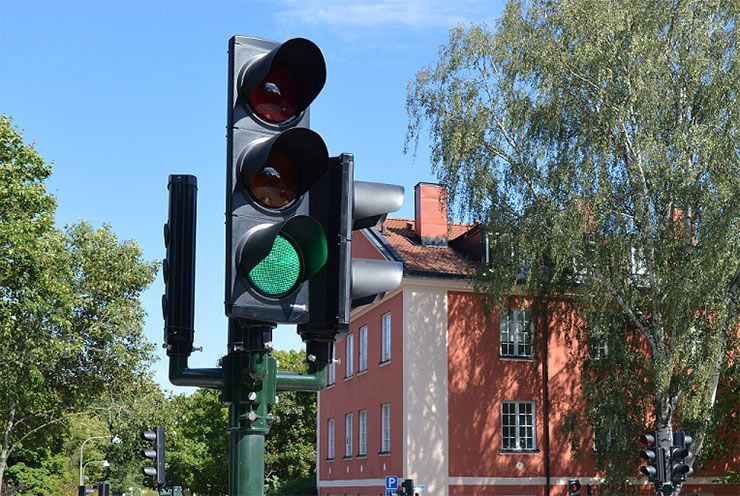
How the green wave works
The Green Wave's recipe for success is a uniform traffic light cycle. In most cities, this runs at 90-second intervals. In order to maintain the flow of traffic, all road users (e.g. pedestrians, cars, bicycles, streetcars) must be taken into account, i.e. everyone must be allocated a green phase once within this period.
However, the green wave only works if many vehicles are grouped together and traveling in a uniform manner. This is the only way for this group of cars to get through the city without a red light. As there are many disruptive factors and the reaction times of many drivers are rather slow, only the first vehicles in a group benefit from the advantages of the green wave.
However, the focus should not only be on cars, but also on other road users such as bicycles. There are alternative ideas here, such as a green traffic light arrow for cyclists turning. However, for traffic systems to function smoothly, all traffic lights and even all road users will have to be digitally connected and communicate with each other in the future.
Smooth communication is also the challenge of intelligent traffic systems that are intended to enable autonomous driving. Other intelligent traffic systems are ...
- Lidar systems,
- Weigh-in-Motion
- and intelligent intersections.
Good to know: There are also other solution models, such as those where cyclists can request green traffic lights while driving. Buses can also radio traffic lights to get a green light.
Find out more:Intelligent traffic systems
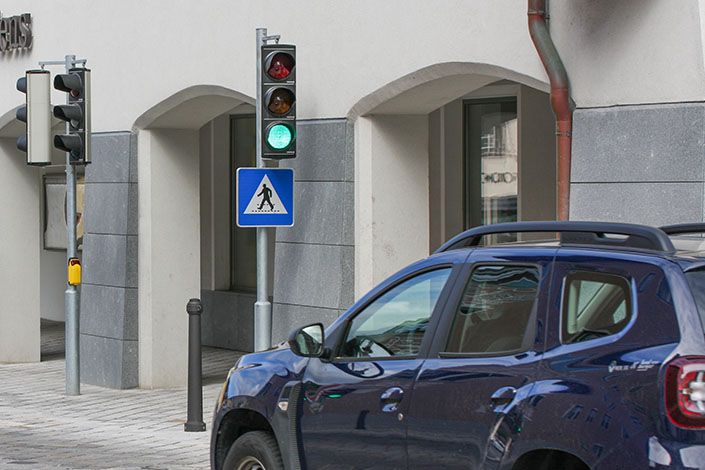
This is why the green wave is difficult to establish in traffic
In order to enable an ideal green wave for traffic in both directions, certain conditions would have to be met. For example, at a speed of 50 km/h, the intersections with traffic lights would have to be exactly 625 meters apart. This is the only way to coordinate a truly optimal green wave.
Moreover, cars are not the only participants in road traffic. And this can quickly disrupt and confuse the painstakingly designed system. The following factors can be decisive for the green wave not functioning smoothly:
In inner-city traffic, pedestrians, cyclists, public transport and even more must be taken into account. If the green wave only takes motorists into account, other road users will suffer.
Two green waves can cross each other.
Traffic flows can change during the course of the day. In the morning, for example, some routes can be better routed into the city than out of the city. However, this can change later on.
There are many reasons why traffic can come to a standstill. These include different speeds, vehicles parking, tailbacks, public transport entering bus stops or vehicles with a 30 km/h speed limit. Vehicles turning into a green wave from a side street also interrupt the flow.
Some road users must be given priority, which interrupts the flow of traffic.
A green wave can often only be implemented for one street or in one direction or when all traffic lights are evenly spaced. Since inner-city streets were naturally not built for this purpose from the outset, but have gradually evolved over time, the spacing is irregular.
There are factors that overload traffic: e.g. events such as markets or a concert that has just finished.
Drivers who do not adhere to the speed limit disrupt the system.
Traffic light systems must also be adapted to fluctuations in traffic – e.g. due to changes in the weather, roadworks and the resulting detour or new industrial estates.
Good to know: In order to maintain the green wave, green times must be switched that are actually intended for cross traffic. If the volume of traffic is too high and the utilization rate reaches over 85 percent, the wave breaks down. It is therefore not possible to switch green waves during rush hour.
Concrete Solutions by SWARCO
Conclusion: The green wave can work in traffic
In summary, it can be said that the green wave in traffic is an intelligent concept for making the flow of traffic more efficient. Nevertheless, there are a number of obstacles that make optimal implementation difficult. Despite the current difficulties, the green wave remains a promising instrument for making traffic in urban areas more efficient and environmentally friendly.
Last but not least: If you consider all the obstacles, it quickly becomes clear that the green wave alone is not feasible. Until motorists, cyclists, buses, streetcars and pedestrians can move smoothly through city centers, a traffic system is needed that is seamlessly networked and communicates successfully with each other.
FAQ
A green wave in traffic exists when several consecutive rows of traffic lights on a road are coordinated in such a way that vehicles receive a continuous green signal and can cross the road without stopping.
Yes, a bus can switch a traffic light to green. If a bus has the appropriate technology, it can communicate with the traffic lights. This then clears the lane so that the bus does not have to brake. Cyclists can also use an app to radio certain traffic light systems.
The K at the traffic light means that a bus has successfully communicated with this traffic light and it has cleared the way with a green signal. The K indicates that the signal has arrived.

STAY INFORMED
GET OUR NEWSLETTER!
Subscribe to our ITS / Smart Mobility Newsletter and receive regular updates on trends, developments, solutions and events.
